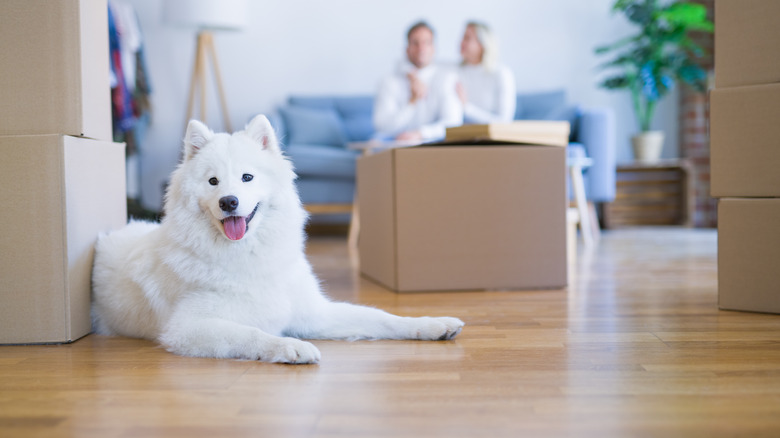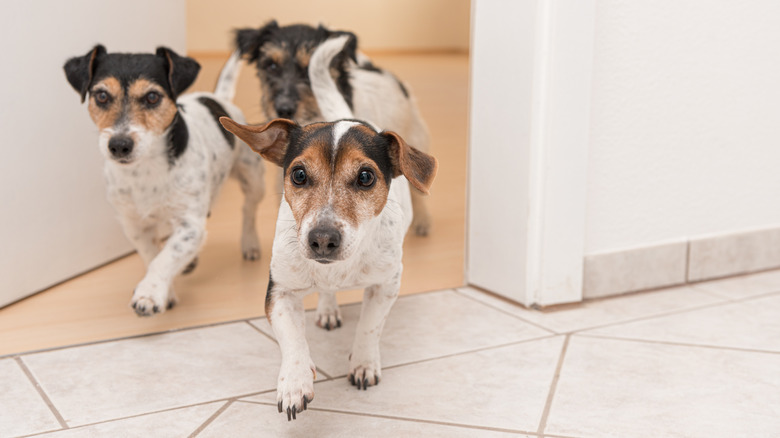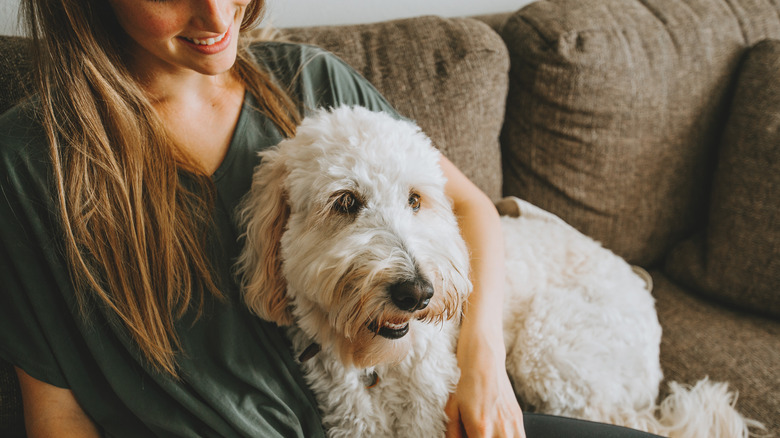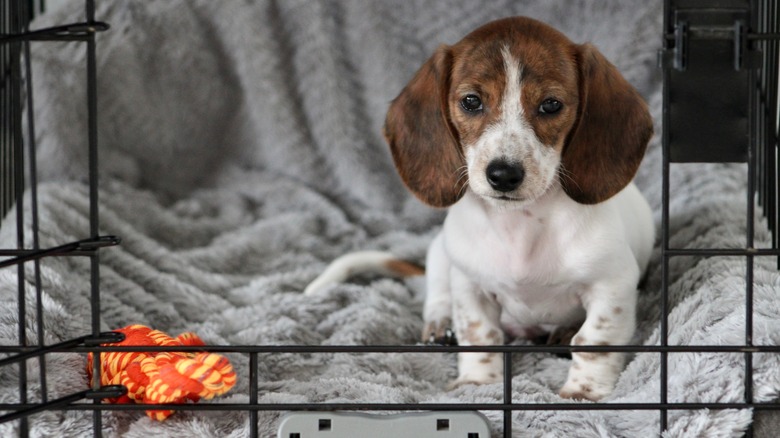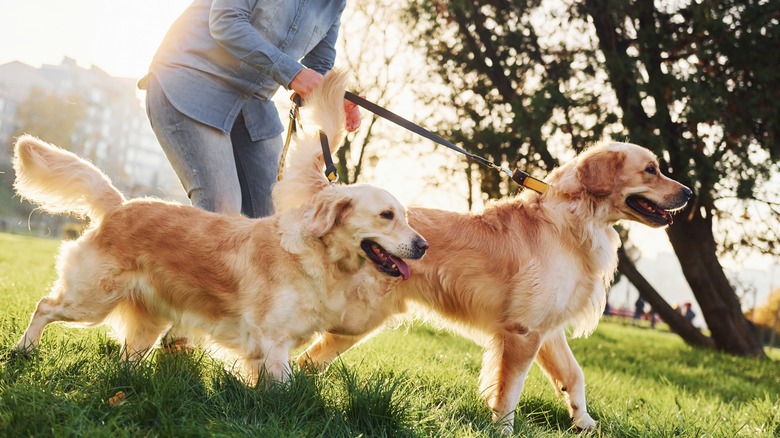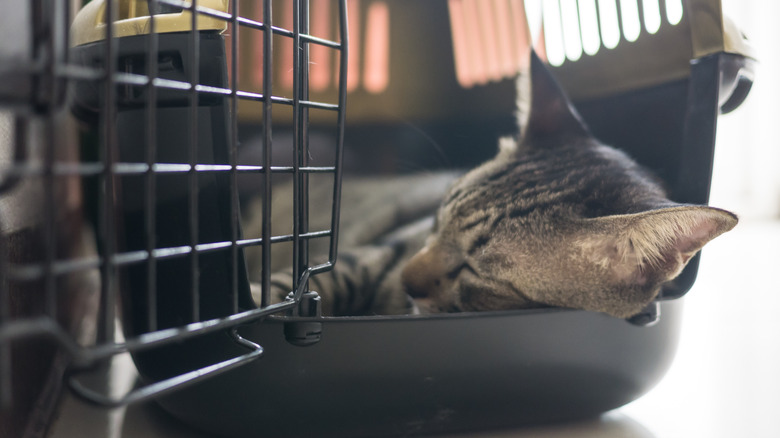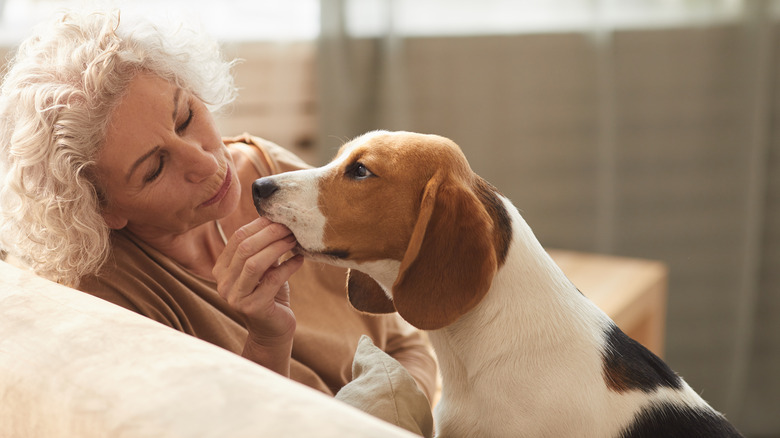10 Tips To Help Prepare You For Moving With A Pet, According To An Expert
Moving can be a confusing experience for a pet. As familiar items begin to disappear and strange cardboard boxes pop up, many experience a lot of anxiety, according to the American Kennel Club. This fear can be overwhelming to our furry friends, who, of course, don't understand the purpose of all the commotion. While owners want to keep their beloved calm during this experience, how can that be done in the middle of so much upheaval? In an exclusive interview with House Digest, Kimberlee Tolentino, a pet behavior expert, offers some sage advice for individuals or families planning a move.
Tolentino is the owner and head dog trainer of Lugaru K9 Training and has years of experience training rambunctious canines. She began her journey by volunteering at a local animal shelter. As a foster for rescues and an owner of a rebellious dog, she began to research the best methods to use when training an animal. She participated in the program at the CATCH Canine Trainers Academy and learned how various scientific approaches made a difference in changing a dog's behavior. Tolentino now works with clients to help them apply the same techniques. Here are 10 tips she offers to help pet owners prepare for a move.
1. Take measures to prevent escapes
For starters, Tolentino emphasizes how important it is to keep pets from running away during the moving process. "Ensure that your dog has a safe and secure space of [its] own, such as a crate or closed room," she said. "It's not uncommon for pets to escape during a move, as doors are left open and stress levels are high."
2. Hire help as needed
When push comes to shove, it may be worth asking for help. Find someone who will focus specifically on your pet while the move is taking place. "If you have the means, hire a pet sitter to keep your animals safe and secure somewhere else while you handle the logistics of moving," Tolentino suggests. "This can spare your pets the bustle as you prepare the new space for them."
3. Consider calming medications
Some pets may need medications to help relieve the stress of all the commotion, and Tolentino recommends talking to a health professional for advice. "Ask your vet for medication that may help keep your pet calm during a move," she said. "We have a prescription for gabapentin, a common pain medication, for one of our cats with instructions to use during stressful situations."
4. Hold onto familiar items
As pets transition into a new home, having an item that reminds them of their old living space can be reassuring. Tolentino suggests adding "familiar items with your last home's scent on them to your pet's carrier or crate when you move, like blankets, clothing, or comforting toys. This can help ease the discomfort of being in a new environment."
5. Familiarize your pets with the new neighborhood
Upon reaching your destination, Tolentino suggests giving your pet some time to become familiar with the neighborhood before introducing them to their new surroundings. "Take your dog for a long walk before entering your new home. This can de-novelize the area and tire out your dog, which can help them relax upon entering the new space," she said. "If you live close enough to your new home, even consider walking your dog from your old space to the new."
6. Introduce the new space slowly
It will also help to not rush your pets while moving. As such, let them become familiar with the new home slowly. "Introducing a room over a day or two can help your dog adjust to the new environment, avoid over-excitement, and set boundaries for where in the home may or may not be off-limits to your pets," Tolentino explains.
7. Soothe anxious pets
"For stressed-out dogs, consider an anxiety jacket," Tolentino suggests. "This is something often used for fireworks and other common stressors, but may also prove helpful during a move." Many dogs benefit from wearing a thunder jacket during a rainstorm since its weight and pressure are calming to animals. As such, this type of item would benefit them during the commotion of moving day as well. Not to mention, it would help prevent any pet damage around the house.
8. Utilize a crate
"Crate animals for transport to reduce external stimuli and keep them safe during the move," Tolentino notes. "Especially over long moves, make sure your pets have a confined but comfortable space to reduce outside stressors." For that matter, a crate can feel like a secure and safe place for an animal, especially when filled with blankets or toys from home.
9. Consider over-the-counter medications
There are other supplements that can help calm a pet that don't require a prescription and instead can be found over the counter. "Some pet owners find that hemp chews and oils help keep pets calm in stressful situations," Tolentino explains. "If you don't have access to or want to avoid prescription medications, many OTC and holistic options are also available." Check online or in pet supply stores to find different options.
10. Allow time to decompress
Finally, it's important to let your pet unwind and get used to the new home. "Give your pet time to decompress in their new home," Tolentino said. "Remember that moving is stressful, so give your dog a few days of calm before jumping into new adventures." To that end, take some time for yourself, and be proud of the way you cared for your pet while moving.
